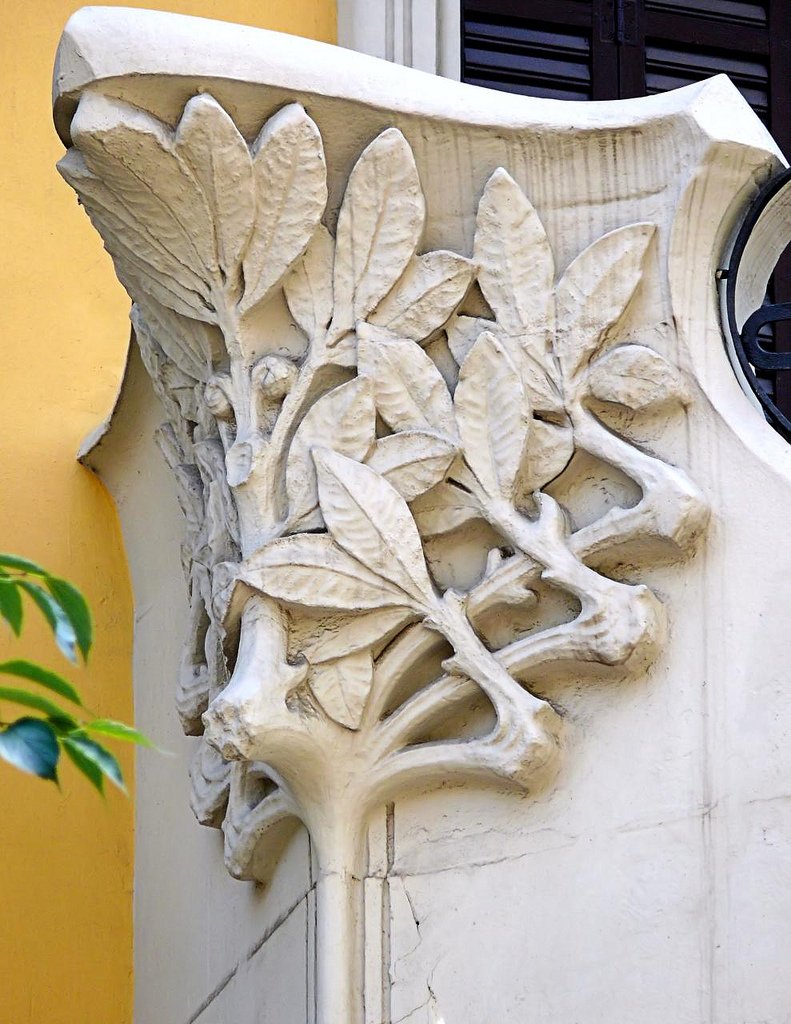#5049. Art Nouveau Floral Relief on Building Facade

The image shows a fragment of architectural facade decoration, crafted in light-colored stone or plaster. This is a meticulously detailed ornamental relief in the form of a stylized branch with leaves, characteristic of Art Nouveau or neoclassical style. The relief possesses significant plasticity and expressiveness, creating the effect of natural movement in the plant motif.
The element is integrated into the corner section of the building's facade, which has a warm yellow tone, creating a striking contrast with the white decorative element. This solution enhances the depth of the relief and highlights the detailed craftsmanship of the floral ornament. The leaves have an elongated shape with clearly defined veins, demonstrating the high level of artistic skill in execution.
Such decorative elements were popular in European architecture of the late 19th and early 20th centuries, when floral motifs were widely used to adorn building facades, giving them special elegance and organic quality. This architectural decoration is not merely an embellishment but an important element of the building's artistic language, reflecting the aesthetic ideals of its era.